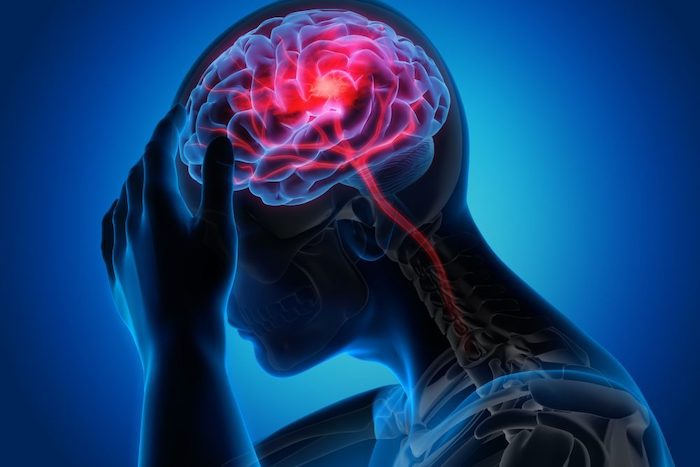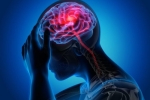
A migraine is a type of headache that causes throbbing pain, often on one side of the head. The pain can be severe enough to become disabling. Many people who get migraines also experience symptoms like nausea, vomiting, and sensitivity to light and sound before and during their headaches.
If you have more than 15 migraine episodes per month, you may be living with chronic migraine. Having so many severe headaches can have a significant impact on your life.
However, medications and other treatments can help reduce the number of migraines you have each month and make the ones you do get less severe.
Migraine medications fall into two categories:
- acute treatments you take once the headache starts
- preventive treatments you take daily to reduce how often you get migraines
Over-the-counter (OTC) medications
OTC pain relievers are the most commonly used acute treatments. They can relieve mild to moderate migraine pain.
OTC pain relievers include:
- acetaminophen (Tylenol)
- aspirin
- nonsteroidal anti-inflammatory drugs (NSAIDs) such as ibuprofen (Advil, Motrin)
- combination migraine drugs that contain a pain reliever and caffeine (Excedrin Migraine)
Take only the dose of these medications that the package recommends, for just as long as you need them. Taking too much of these drugs or staying on them for long periods can cause side effects like bleeding and ulcers. You can also get rebound headaches from long-term use of pain relievers.
OTC medications called antiemetics to relieve nausea that often comes with migraines. These treatments are available in suppository form if you feel too sick to swallow a pill.
Prescription medications
Prescription migraine medications are available for both acute and preventive treatment.
All acute migraine medications work best if you take them as soon as your headache starts. Some NSAIDs come in prescription versions. Other acute migraine drugs available by prescription include the following:
Triptans
Triptans relieve migraine pain and other symptoms by narrowing blood vessels in the brain. These medications come as a pill, injection, and nasal spray.
Examples of triptans include:
- almotriptan (Axert)
- eletriptan (Relpax)
- frovatriptan (Frova)
- naratriptan (Amerge)
- rizatriptan (Maxalt)
- sumatriptan (Imitrex)
- zolmitriptan (Zolmig)
Ergots
Ergots are an older class of migraine medications. They don’t work as well as triptans, and they can cause more side effects. Yet their effects last longer, which makes them a good option for headaches that continue for more than 48 hours.
Dihydroergotamine (D.H.E. 45, Migranal) is a variation of ergots that causes fewer side effects and may be easier to tolerate. You can take it as an injection or nasal spray.
Steroid injections
Injections of steroids like prednisone or dexamethasone also relieve migraines. You may need to get this treatment in an emergency room.
Preventive medications
Preventive medications can take a month or two to start working. For about two-thirds of people who take them, these drugs cut the number of migraine episodes in half.
Examples of preventive medications include:
- beta-blockers such as metoprolol (Lopressor), propranolol (Inderal LA, Innopran XL), and timolol (Betimol)
- calcium channel blockers like verapamil (Calan, Verelan)
- tricyclic antidepressants like amitriptyline and nortriptyline (Pamelor)
- anti-seizure drugs such as topiramate (Topamax) and valproate (Depacon)
- onabotulinumtoxinA (Botox) injections
- erenumab-aooe (Aimovig)
Neuromodulation
Neuromodulation devices are a newer alternative to migraine medication. These devices work by slowing brain activity to reduce headache pain.
The FDA has approved three neuromodulation devices:
- Cefaly activates nerves in the forehead. You place it in the middle of your forehead for 20 minutes a day to prevent headaches. One study showed a 50 percent reduction in headache days among people who used this device.
- SpringTMS uses a magnet that produces pulses when you briefly place it on the back of your head.
- GammaCore stimulates the vagus nerve in the neck for 90 seconds to two minutes at a time.
Other neuromodulation devices are being tested, but have not yet been approved.
Surgery
Surgery is an option for people who have not gotten enough relief from migraine medications or other treatments. During the procedure, the surgeon relieves pressure on the nerves that trigger your migraines. Often this can be done as a same-day procedure.
Lifestyle changes
Medical treatments aren’t the only method for treating migraines. Here are a few lifestyle approaches that can help reduce the number of headaches you get:
- Avoid your triggers. Keep a headache diary to find out what causes your migraines. Common triggers include alcohol, stress, food additives like MSG, loud noises, bright lights, and strong odors.
- Try relaxation therapy. Practice yoga, meditation, or progressive muscle relaxation to relieve the stress that can cause headaches.
- Get into a sleep routine. Too much or too little sleep can both cause migraine headaches. Try to go to bed at the same time each night, and wake up at the same time every morning.
- Exercise daily. Regular aerobic exercise like walking or bike riding can reduce both the frequency and severity of migraines.
- Don’t skip meals. Hunger is a big migraine trigger. Eat breakfast, lunch, and dinner every day, with snacks in between as needed.
When to see your doctor
When you have headaches on more than 15 days each month, or they’re severe enough to disrupt your life, see a doctor. You can start with your primary care doctor, but you may also benefit from seeing a neurologist or headache specialist.
Keep track of your symptoms in a headache diary, so you can more accurately describe them to your doctor. Also, be prepared to tell your doctor how you’ve been treating your headaches so far.
It can take some trial and error to relieve migraines. With so many migraine therapies available today, there’s a good chance you’ll find the one that gives you relief. You might have to test a few different treatments before finding an option that works for you.
Precision Pain Care and Rehabilitation has two convenient locations in Richmond Hill – Queens and New Hyde Park – Long Island. Call the Richmond Hill office at (718) 215-1888, or (516) 419-4480 for Long Island office, to arrange an appointment with our Interventional Pain Management Specialist, Dr. Jeffrey Chacko.













